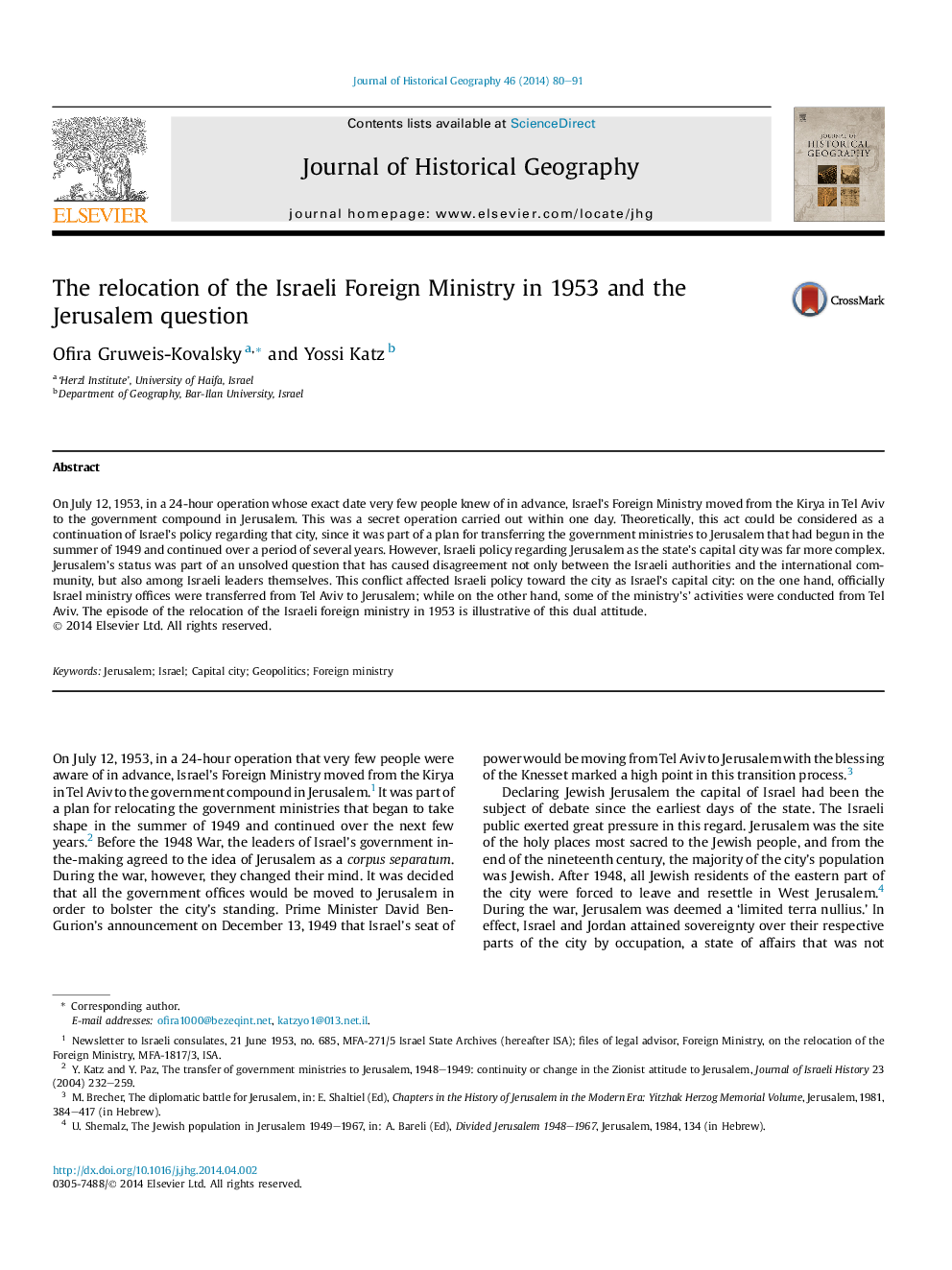| Article ID | Journal | Published Year | Pages | File Type |
|---|---|---|---|---|
| 1039037 | Journal of Historical Geography | 2014 | 12 Pages |
•Jerusalem perceived by Israel neither a capital nor an ordinary city.•The process of relocation of the Foreign Ministry mirrored the city's status.•The United States did not recognize Israel's attempt to shape reality in West Jerusalem.•The United States declared a complete boycott of Jerusalem during 1953–1954.
On July 12, 1953, in a 24-hour operation whose exact date very few people knew of in advance, Israel's Foreign Ministry moved from the Kirya in Tel Aviv to the government compound in Jerusalem. This was a secret operation carried out within one day. Theoretically, this act could be considered as a continuation of Israel's policy regarding that city, since it was part of a plan for transferring the government ministries to Jerusalem that had begun in the summer of 1949 and continued over a period of several years. However, Israeli policy regarding Jerusalem as the state's capital city was far more complex. Jerusalem's status was part of an unsolved question that has caused disagreement not only between the Israeli authorities and the international community, but also among Israeli leaders themselves. This conflict affected Israeli policy toward the city as Israel's capital city: on the one hand, officially Israel ministry offices were transferred from Tel Aviv to Jerusalem; while on the other hand, some of the ministry's' activities were conducted from Tel Aviv. The episode of the relocation of the Israeli foreign ministry in 1953 is illustrative of this dual attitude.
